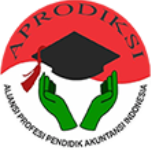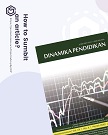Developing Contextual Learning Videos on Course of Administration Education Research Methodology
(1) Universitas Negeri Yogyakarta
(2) Universitas Negeri Yogyakarta
(3) Universitas Negeri Yogyakarta
Abstract
This study aimed to produce and determine the feasibility of contextual learning video on course of Administration Education Research Methodology. The research method was research and development of ADDIE model. The stages of this research and development consisted of Analysis, Design, and Development. The data collection techniques in analysis stage were interview and observation, while questionnaire was used in development stage. Data collection instruments were inventory questionnaires with rating scales. Data analysis technique was descriptive analysis with quantitative and descriptive approaches. Descriptive techniques were used to analyze the results of problems and learning components of Office Administration Education Research Methodology. Quantitative techniques were used to analyze data from experts. Validation of developed contextual learning media involved media expert and material expert. The conclusions of the particular study are: 1) this study has produced a contextual learning video on course of Administration Education Research Methodology with material of research proposal in topic of Introduction; 2) according to the assessment of media experts and material experts, the developed learning video has a criteria of very feasible.
Keywords
Full Text:
PDFReferences
Aini, S. N. (2015). Pengaruh strategi pembelajaran, gaya belajar, sarana praktik, dan media terhadap hasil belajar patiseri SMK se-Gerbangkertasusila. Jurnal Pendidikan Vokasi. Vol. 5, No.1.
Aldoobie, N. (2015). ADDIE Model. American International Journal of Contemporary Research. Vol. 5, No. 6.
Arsyad, A. (2007). Media Pembelajaran (cetakan kesembilan). Jakarta: PT Raja Grafindo Persada.
Dick, W., Carey, L., & Carey, J. O. (2005). The systematic design of instruction (6th ed.). Boston: Pearson.
Hadiyanta, N. (2013). Penerapan Model Pembelajaran Kontekstual Teaching and Learning untuk Meningkatkan Hasil Belajar PKN. Jurnal Kependidikan, 43 (1): 32-38.
Heinich, R., at.al. (1996). Instructional media and technologies for learning (4th ed.). New Jersey: Prentice-Hall.
Irwandi. (2013). Pengaruh pendekatan kontekstual terhadap hasil belajar biologi siswa SMA. Jurnal Ilmu Pendidikan, Jilid 19, Nomor 1, Juni 2013, hlm. 100-105.
Johnson, E. B. (2012). Contextual Teaching and Learning: menjadikan kegiatan belajar mengajar mengasyikan dan bermakna. Diterjemahkan oleh Ibnu Setiawan. Kaifa: Bandung.
Kholifah, S. (2016). The Development of Learning Video Media Based on Swishmax and Screencast O-Matic Softwares through Contextual Approach. Jurnal Dinamika Pendidikan. Vol.11, No.1, hal. 50-55
Lynch, R. L., & Harnish, D. (2003). Implementing contextual teaching and learning by novice teachers. Retrieved from http:///www.coe.edu/ctl/casestudy/Final.pdf.
Lewthwaite, S. & Nind, M. (2016) Teaching Research Methods in the Social Sciences: Expert Perspectives on Pedagogy and Practice, British Journal of Educational Studies, 64:4, 413-430, DOI: 10.1080/00071005.2016.1197882
Nind, M., Kilburn, D., & Luff, R. (2015). The teaching and learning of social research methods: developments in pedagogical knowledge. International Journal of Social Research Methodolog. Volume 18, 2015 - Issue 5, Pages 455-461.
Prastati, T & Irawan, P. (2005). Media sederhana. Jakarta: PAU Dirjen Dikti Depdiknas.
Putnam, A. R. and Leach, L. (2007). Contextual Teaching with Computer-Assisted Instruction. Department of Workforce Education and Development Southern Illinois University: Carbondale.
Sadiman, A. S. (2006). Media Pendidikan: Pengertian, pengembangan, dan pemanfaatannya. Jakarta: PT Raja Grafindo Persada.
Sanjaya, W. (2009). Strategi Pembelajaran Berorientasi Standar Proses Pendidikan. Kencana Prenada Media Group: Jakarta.
Shamsid-Deen, I. & Smith, B. P. (2006). Contextual teaching and learning practices in the family and consumer sciences curriculum. Journal of Family and Consumer Sciences Education, Vol. 24, No. 1, Spring/Summer, p.14.
Sugeng, P., Heni, R., dan Achmad, T. (2013). Mobile Searching Objek Wisata Pekanbaru Menggunakan Location Base Service (LBS) Berbasis Android. Jurnal. Politeknik Caltex Riau. (Vol 1 hlm 177). http://www.pdii.lipi.go.id/wp-content/uploads/2014/03/Seminar-Nasional- Infonnatika-_SNlf-2013. Diakses pada 12 Mei 2016.
Sujana. & Rivai. (1992). Media pengajaran. Bandung: CV Sinar Baru.
Wang Q. & Cheung W. S. (2003). Designing hypermedia learning enviroments. Dalam Chee, T.S & Wong, A.F.L (Eds.), Teaching and Learning with Technology: An Asia-Pacific perspective (pp. 216-231). First Lok Yang Road, Singapore: Pearson Education Asia Pte. Ltd.
Widiati, U, Irawati, E, Basthomi, Y, et.al. (2013). Media video pembelajaran: methods of TEFL. Jurnal Ilmu Pendidikan, Jilid 19, Nomor 1, Juni 2013, hlm. 61-68.
Refbacks
- There are currently no refbacks.

This work is licensed under a Creative Commons Attribution 4.0 International License.


.png)

.png)





